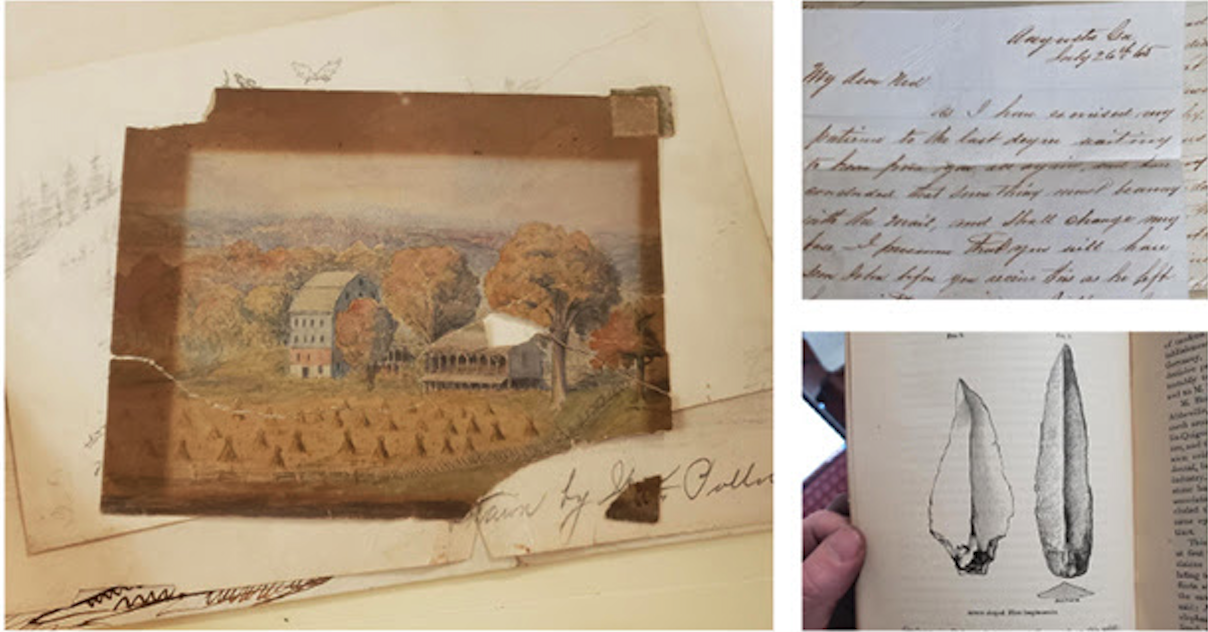Woodville Archaeology and Archives Update
By Nina Schreiner, MA - Woodville Archaeology Advisor and PhD candidate at University of South Carolina
In July 2022, I returned to Woodville for the first time in two years to complete archival research for my dissertation. I came to study the Sarah Wrenshaw steinmark Papers, a collection of several thousand documents dated ca. 1790 to 1970 detailing the lives of the Cowan and Wrenshaw families of Woodville. The papers were finally ready to access thanks to the careful and dedicated work of intern Ana Giampa. Giampa spent a great deal of time during her spring semester organizing Woodville’s archive and creating a finding aid, a kind of index for scholars to locate documents in the collection. Her processing made it possible for researches to study life at Woodville during the nineteenth and early twentieth centuries. This archive is a treasure trove of information that connects former Woodville residents to their Pittsburgh business interests, rural neighborhood, and a kin network that extended across Pennsylvania and into the Southeastern U.S.
For me, the Sarah Wrenshall Steinmark Papers contained unique information about the daily lives of the Wrenshalls, specifically their hobby of “relic hunting.” The families who lived at the Woodville knew that Native Americans had lived at the site before them; a Monongahela era hamlet existed beneath the main house and the surrounding grounds. The Wrenshalls found stone tools and pieces of pottery under their homes, leading them to search for more “relics” on neighboring properties. They continued the practice while leading railroad construction in the American South and West. These collecting activities occured before the development of professional archaeology in the late nineteenth century.
The archive at Woodville shows us how archaeology emerged from the informal social acts of siblings and friends who were interested in the time before their own presence in North America. They wrote letters to each other about interesting speciimens and kept inventories of their collections, including who found each piece and where it was excavated. These cocuments contain the history of archaeology. They also allow us to reconstruct a landscape of indigineous sites that have since been destroyed: a burial mound adjacent to route 50, a village beneath what is now a shopping center. These letters are evidence of a world erased by suburban development and evidence that can help us understand the material record of artifacts curated by the Wrenshalls at Woodville.
What I learned at the archive last summer is the foundation for my dissertation at the University of South Carolina. It provides historical context for the artifacts that are my primary focus. These artifacts include hundreds of Native American objects collected by the Wrenshall family from 1850 to 1920, which were displayed on shelves in the main house. Analysis of these artifacts is my next step in my project: What types of artifacts are present? What kinds of sites do they represent? Which descendant communities might they be associated with? I will answer these questions and more by connecting the objects to passages from documents in the Sarah Wrenshall Steinmark Papers, expanding the story of early archaeology at Woodville over the coming months.

